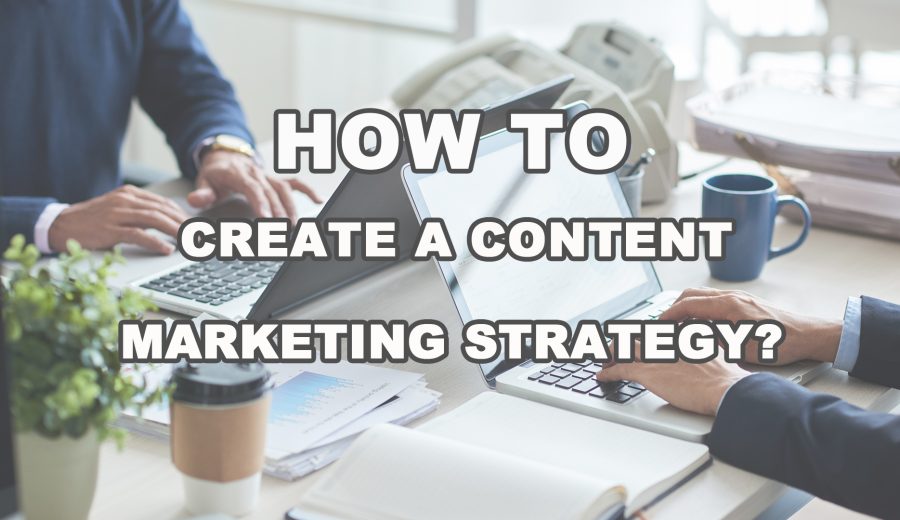There are many marketing methods that have been introduced in specific before, such as word-of-mouth marketing, social media marketing, search engine marketing, etc. In addition, marketers need to create a content marketing strategy that influences how they reach their audience.
Because content marketing strategy helps to bring in new customers, educate your target prospects, drive revenue, generate awareness, and help build a powerful brand for dropshipping business.
What’s more, writing for the Content Marketing Institute, Julia McCoy mentions that a solid content marketing strategy can generate three times more leads than paid advertising. The article will introduce 8 steps to create a content marketing strategy.
1. Define Your Goals
Defining your goals is a good starting point for your content marketing strategy. Whatever your content marketing goals are, be sure that they’re sustainable for the long-term and they actually connect to your organization’s overarching goals, mission, and vision.
Furthermore, content marketing can serve many goals and you’ll have more success if you focus your efforts on the main goal.
There are some typical goals:
- Making more sales
- Getting more traffic
- Increase site conversions
- Increase brand awareness
- SEO success
- Reduced marketing costs
- Social media engagement
- Retain and resell to current customers
And each goal has a complex set of key performance indicators. Except for the general goals, you also need to make the goals more specific and measurable based on the SMART criteria. And SMART criteria includes specific, measurable, attainable, relevant, time-bound. You can refer to the following.
- Reach a certain sales target within the month, quarter, or year.
- Get more visitors and signups for your websites.
- Get a certain number of new email subscribers.
- See an increase in site traffic and in engagement with your content.
- Improve the search ranking of some of your key pages to help boost traffic.
- Get a certain number of mentions, shares, and comments for your content.

2. Know Your Audience
You need to have a clear audience description that clarifies who your audiences are. In fact, 80% of content marketers are focused on audience building.
By knowing your target audience, you can provide more relevant, informative, and valuable content that they’ll prefer to read and convert on. Besides, there are three actions you can taken.
①Collect demographic data
You can collect demographics which cover age, gender, education, income, etc on your visitors, email subscribers, and social media followers.
②Get customer feedback
Get more feedback from your current customers. Thus you can know more about your target audiences. Knowing how they feel about the current content and what is their urgent demand, you will understand your audiences’ priorities.
③Create buyer personas
Buyer personas also mean customer avatars, describe your ideal readers and customers so that you can target content better. And the best buyer personas include information on your customers’ pain points, challenges, sources of information, and behavioral motivators.
3. Choose The Main Content Channels
There is a graph showing the most effective channels that marketing content uses to prospective customers from marketing charts.
The most common channel is email, and 82% of marketers consider it as the most effective. And after it is social media with 54% and website/blog with 51%. You can start with one or two channels and expand as you feel more comfortable.
And you can see some data in two ways to decide on which social media to target to get social media engagement and shares for your content. One is by Google Analytics, go to Acquisition => Social => Overview to see the main social media where your content is being shared.
And the other is by Buzzsumo, go to its Content Analysis tool and type your domain name into the onscreen search box to see shares by social media network. You can see shares by content type or content length and top content in the last year as well.

4. Decide On Content Types
There are some of the most popular content types that marketers are creating.
①Blog Posts
Blog posts which goal is to attract visitors to a website are an essential part of your content marketing mix. And they deliver strong results. Ideally, your blog posts should be actionable, valuable, shareable, published regularly, and may include a range of article types.
And generally, we recommend that blog posts be between 1,000 and 2,000 words in length. But experiment to see if your audience prefers longer or shorter reads.
②Videos
Videos are a highly engaging content medium. It captures people’s attention more than any other content type. And it is proven to engage your visitors to keep them on-site longer, improve lead generation, and reduce abandonment.
Furthermore, videos are shareable across social media platforms and websites alike and 40X more likely to get shared on social media than other types of content. Actually, 51% of marketing professionals worldwide name video as the type of content with the best ROI.
③Ebooks
Ebooks are lead-generation tools that potential customers can download to learn more valuable information after submitting a lead form with their contact information. Typically, they are longer, more in-depth, and published less frequently than blog posts.
④Case Studies
Case studies give you the opportunity to tell the story of a customer who succeeded in solving a problem by working with you to make others convince. It can take many different forms, such as blog post, ebook, podcast, etc.
⑤Templates
Templates are a handy content format that provides tremendous value to your audience. When you provide them with template tools that can save them time and help them succeed, they will be more likely to keep engaging with your content later.
⑥Infographics
Infographics can organize and visualize data in a more compelling way than words alone. If you’re trying to share a lot of data in a way that is clear and easy to understand, infographic is a good choice.
If you want more ideas, there are plenty of different content types to diversify your website.
5. Create a Content Calendar
It’s essential to use a content calendar to get all your content scheduled. There are several tools for you to do this. If you’re not publishing a lot of content, you can use Google Calendar and simply put the due dates for each piece of content there.
Otherwise, you have to manage a content team and the production workflow you’ve decided on. And options for managing this include productivity and task management tools like Asana or a purpose-built editorial calendar tool like CoSchedule. You are allowed to schedule different parts of the content creation process by both of them.
6. Brainstorm Content Ideas
There are five steps to create the specific topics and keywords that your audience are looking for.

①Brainstorm topics and terms
It is a good point to start by writing down many blog post ideas your audience may be interested in. In the process, involve people who work directly with your users, such as a customer service or sales rep.
②Use a keyword research tool to gather results
Plug terms into a keyword research tool like Google’s Keyword Planner, Moz, keywordtool.io or any other to see what comes up.
③Expand and refine your list
Take that big list and refine or group them together to see what looks good and what doesn’t make sense to your business goals.
④Build a spreadsheet and prioritize terms
Build a spreadsheet with the data you got in your tool like keyword, estimated search volume, difficulty, and opportunity, and assign a priority to each one. And think about which is most important to your business.
⑤Outline content that hits the 3 key needs
Take your top terms and outline content that will serve your goals, the user’s needs, and the keyword targeting. This is also SEO-friendly content.
What’s more, there are some tools for you to brainstorm content ideas.
7. Distribute and Market
You need to distribute and market your content. There are four ways that you can refer to.
- Set a schedule for sharing your content on social media, both immediately, and through a drip campaign via a tool like Missinglettr.
- Use email marketing to distribute and share your content to subscribers.
- Answer the relevant questions with your content on Quora.
- Notify any influencers mentioned in your content to spread the word even wider.
8. Measure Your Content Marketing
Finally, it’s time to measure the result of your content marketing strategy to see if you have achieved the goals. And you can use some tools to measure it.
- Google Analytics to see how your content is performing
- Buzzsumo to measure social sharing activity
- Google Alerts and Mention to see if your content is being mentioned and shared
- SEMRush to assess the search rank of your content
It’s important to keep in mind that content marketing strategy needs to be documented in a formal written guide. And in this way, you can refer to it as you move forward into the planning and execution stages.






